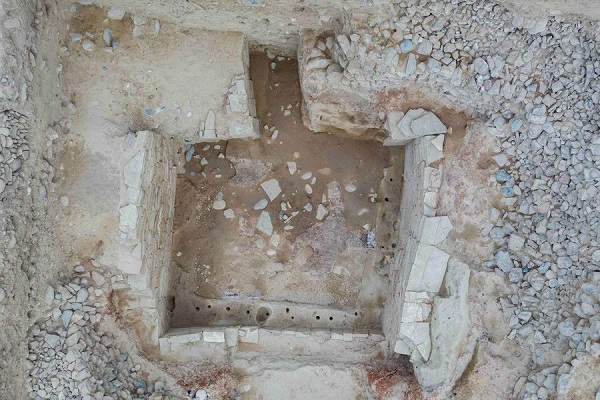
Urumqi, (Samajweekly) Chinese archaeologists examining an ancient tomb in northwest China’s Xinjiang Uygur Autonomous Region have conjectured that the site was dedicated to the worship of the sun.
The tomb was found in Nilka County in the Kazak Autonomous Prefecture of Ili in 2015. Earlier excavations by an archaeological team from the Xinjiang Regional Institute of Cultural Relics and Archaeology found pottery and stone tools in the tomb, which helped the researchers date it to around 3,500 years ago, the Xinhua news agency reported.
An excavation project starting last year led to the discovery of 17 lines of stones alongside the tomb, forming a pattern that resembles sun rays.
“The ray-like pattern might imply sun worship,” Ruan Qiurong, leader of the project, said. “Similar patterns have been found in relic sites in other parts of Xinjiang and the Eurasian grassland.”
The bottom and exterior of the tomb chamber were paved with red clay, which also points to sun worship, Ruan said, adding that the tomb’s complex structure shows its owners were of high social status.
Experts say the tomb provides key research materials for the study of social conditions and cultural exchanges in Xinjiang more than 3,000 years ago.









